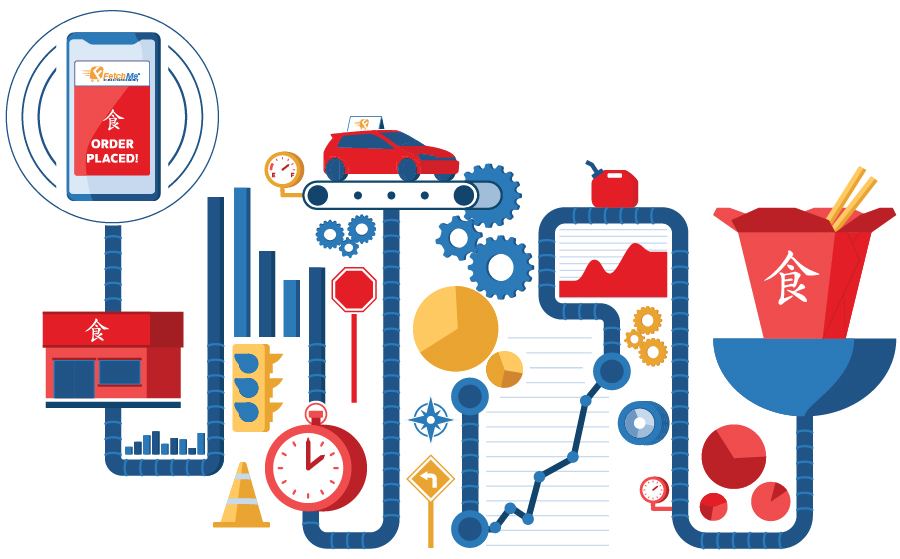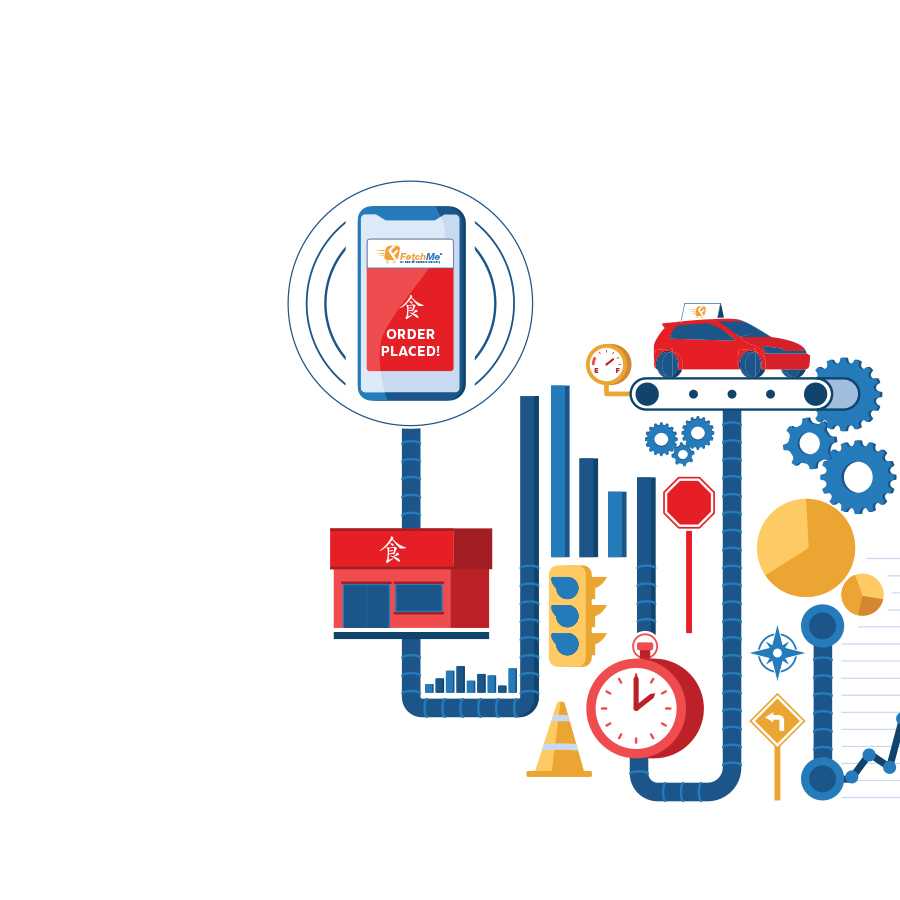Want Caesar salad and a steak, but can’t leave the house? Sweet and sour pork, but don’t want to drive in the rain? Need groceries, but your car won’t crank? Call FetchMe.
After only two years, restaurant/grocery delivery service FetchMe is flourishing. The startup has served more than 10,000 customers, filled its 50,000th order and has contracted with 89 restaurants in the Auburn/Opelika area. But there’s a problem.
“During the school year, we do a lot of deliveries during the day, but those deliveries come at random times,” says FetchMe owner/founder Harrison Evola, a 2017 Harbert College of Business graduate. “Thursday’s busiest time might be 7:30. But what about Wednesday? At lunch one day, we might have 20 to 30 deliveries, but then zero for an hour, then it picks up again. It seems as if it’s random—but there’s a pattern that we can probably track.”
Evola’s assumption is correct. He solicited the help of Dr. Ashish Gupta, Associate Professor of Analytics in the Harbert College of Business.
“FetchMe deals with a number of challenges—competition from large players like Uber Eats, lack of resources, technological issues,” says Gupta. “But it has advantages as well. The company is agile. It has less inertia to shift and adopt change. It can benefit from analytics and overcome these challenges rather quickly!”
Evola hopes to expand, and a better understanding of customers’ needs provides the information to do just that. “Analytics was a missing piece for our business,” he says. “Today, the most popular cuisine on the platform might be Asian food. Tomorrow, it might be pizza. Once we find the patterns, we can make sure we have the right number of drivers and the right restaurants on the platform to meet demand.
“We can also help our drivers—Fetchers. With a better understanding of [the peaks of] consumer traffic, we can schedule more drivers around those times, and delivery times go down.”
Evola took advantage of Auburn University’s Tiger Cage Accelerator and Incubator, where office space and professional mentorship is provided to student startups. “Having access to a group of people who can assist you with problems or answer questions is invaluable,” he says.
Part of being a successful entrepreneur, Evola says, is understanding customer demand. “If you are going to start a business, make sure that you validate demand first,” he says. “Make sure that you are solving a problem or meeting a need before you get started. Due diligence in the beginning is very important.”
Two years into his business, Evola believes due diligence is necessary again. That’s why he’s enlisted analytics help. “After two years of business, the data is there,” he says. “We just have to
interpret it.”

The Impact of Predicting the Future
Big data analytics has effectively permeated the consciences of consumers and businesses alike.
Technological advances in analytics have changed the way business is conducted and the way people live
their lives.
In order to gain a full understanding of this revolution, it is necessary to first understand the nature and relationship between big data and predictive analytics. In simplest terms, big data is just an extremely large data set. This data typically originates from one of three primary sources, including the internet/social networks, traditional business systems, and increasingly from the Internet of Things, or IoT.
IoT refers to the ever-growing network of physical objects—security systems, thermostats, cars, electronic appliances, lights, alarm clocks, speaker systems, vending machines—that feature an IP address for internet connectivity.
Big data sets can be analyzed computationally to reveal patterns, trends, and associations, especially relating to human behavior and interactions. This need for drawing meaning from these large and complex data sets has resulted in the advent of big data/predictive analytics, which encompasses a variety of statistical techniques that analyze current and historical facts to make predictions.
Consider the degree to which big data analytics has impacted our interactions and consumption behavior:
As consumers, big data analytics has transformed the way we shop and interact with media. Applicable data algorithms offer a customized message by tracking what we buy, look at, and listen to, then comparing this data with what others have viewed or purchased.
Beyond the benefits of consumers’ individual encounters, industry has been profoundly altered by the big data analytics revolution. Industry 4.0, the fourth industrial revolution, is characterized by cutting-edge digital technologies harnessed to optimize and automate all aspects of upstream/downstream supply-chain processes.
Telecommunications, advertising, and insurance are the three industries who say big data analytics is the most crucial part to their business intelligence initiatives. Significant uses include data warehouse optimization, forecasting, and customer/social analysis.
New technologies continue to develop at an exceedingly rapid rate. Some of these include blockchain analytics, omni-channeling, and machine learning/artificial intelligence.
Chris Hopkins
McLain Family Professor of Marketing
Editor-in-Chief of Journal of Marketing Theory and Practice

